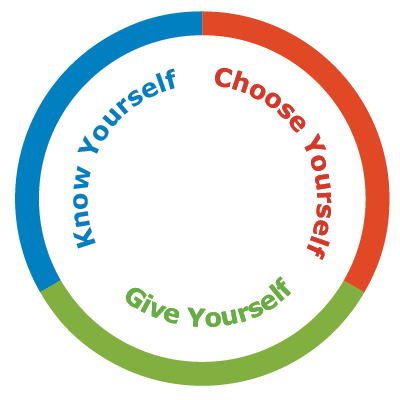What is emotional intelligence—and how do you actually use it in real life? Both at work, and personally?
In 1995, Daniel Goleman published a groundbreaking book: Emotional Intelligence: Why It Can Matter More Than IQ. In it, Goleman posits that emotional intelligence is as important as IQ for success, including in academic, professional, social, and interpersonal aspects of one’s life. But as that book popularised the phrase and idea, one question came up again and again from people all around the world:
That question led to the creation of Six Seconds—and this model, in which Flourish has formed accreditation and certification to use.
Most emotional intelligence models describe what EQ is. The Six Seconds Model goes a step further: it shows you how to practice emotional intelligence in daily life.

Built around three core pursuits—Know Yourself, Choose Yourself, and Give Yourself—this model offers a clear, practical process to grow emotional intelligence – as an individual or to enhance workplace productivity. It’s not a fixed trait or personality type, but a set of skills you can develop over time. At the core, emotional intelligence is something to BE. By being more emotionally intelligent, smarter with feelings, you will more accurately recognise emotions in yourself and others. This data will help you make decisions and craft effective solutions to the “life puzzles” you face each day – personally and at work. It’s also important to put it in action – hence the verbs. The three pursuits are actions and “under” the three pursuits live eight specific, learnable, measurable competencies. They’re measured through the Six Seconds Emotional Intelligence Assessment – or SEI. Here are the three pillars and eight competencies – with definitions below:
Click each tab to learn more
Clearly seeing what you feel and do.
Emotions are data, and these competencies allow you to accurately collect that information.
– Enhance Emotional Literacy: Accurately identifying and interpreting both simple and compound feelings.
– Recognise Patterns: Acknowledging frequently recurring reactions and behaviours.
Doing what you mean to do.
Instead of reacting “on autopilot,” these competencies allow you to proactively respond, leading to better levels of communication and collaboration.
– Apply Consequential Thinking: Evaluating the costs and benefits of your choices.
– Navigate Emotions: Assessing, harnessing, and transforming emotions as a strategic resource.
– Engage Intrinsic Motivation: Gaining energy from personal values & commitments vs. being driven by external forces.
– Exercise Optimism: Taking a proactive perspective of hope and possibility.
Doing it for a reason.
These competencies help you put your vision and mission into action so you lead on purpose and with full integrity.
– Increase Empathy: Recognising, connecting with, and appropriately responding to emotions.
– Pursue Noble Goals:Connecting your daily choices with your overarching sense of purpose.